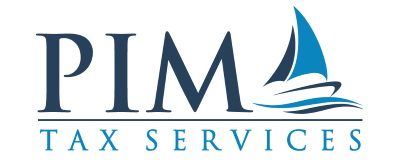A: PIM Tax Services was established in 2015.
A: Paul is an Enrolled Agent. The other preparers have all completed the Comprehensive Tax Preparers Course from The Income Tax School.
A: Enrolled Agents (EAs) are federally-licensed tax practitioners. As stipulated by the Department of the Treasury’s Circular 230 regulations, EAs are authorized to advise, represent, and prepare tax returns for individuals, partnerships, corporations, estates, trusts, and any entities with tax-reporting requirements. Enrolled agents are the only federally-licensed tax practitioners who specialize in taxation and have unlimited rights to represent taxpayers before the IRS. (More about Enrolled Agents)
A: No and no! PIM Tax Services does tax preparation, planning, and limited representation for our clients. If you want or need bookkeeping and/or payroll services, then you should continue your internet search. It is usually best to have all those services bundled together at one firm.
A: Yes! We love to work with financial advisors, but we have a rule: the adviser MUST be involved during the tax prep process. We don’t work with advisors who drop their clients off on our doorstep and expect us to take care of everything. If you are an advisor interested in working with a tax firm, call the office and schedule some time to discuss. 757.357.1110
A: If you are coming to the office, you need an appointment. Even if you are just dropping off documents. Call 757.357.1110 and Maria will be happy to set that up for you.
If you are using our online systems, you do not need an appointment. Just log in and start uploading your documents!
A: We don’t. Those are specialized fields, and we don’t specialize in them. Asking us to prepare your Trust or Estate return would be like asking a divorce attorney to represent you in a dispute over a patent. Not the right fit.
A: Yes, but only if you are an existing tax preparation client. We do not have capacity to assist non-clients with resolving their tax issues.
A: Yes. If you provide us with ALL your correct tax information and we file an incorrect tax return, we will refund your tax preparation fee.
A: Yes, if you are Scarlett Johansson. No, if you are anyone else. We will need at least a few days, depending on the current workload. Sometimes a few weeks. (Fair Warning: If you’re in Paul’s work queue and Scarlett calls, you are moving down the list. You understand.)
A: There aren’t any tax benefits to forming an LLC. You can use all the tax benefits of business ownership without wrapping your business in an LLC.
Limited Liability Companies are designed to protect the business owner(s) from personal liability for their business. Liability is a legal issue, not a tax issue. If you have liability concerns regarding your business you should consult with an attorney licensed in your jurisdiction.
If you’re looking for your refund and it’s been more than 21 business days (or more then 3 weeks) since you filed, you can check the status of your return using the appropriate website below:
- IRS (Federal Refunds): https://www.irs.gov/wheres-my-refund
- North Carolina (NC): https://www.ncdor.gov/refund#Tab-WheresMyRefund-658
- Virginia (VA): https://www.tax.virginia.gov/wheres-my-refund
If you filed in a different state, you could find your refund status by searching “[Your State] + refund” in a search engine. Be sure to click on a link that ends in “.gov” to ensure you’re visiting an official and secure government website.
For many taxpayers the answer is simply “six years”, but if you have losses being carried forward from one year to the next, you may need to keep them a lot longer.
Read this article for more information: How Long Should I Keep My Tax Returns?
A: He is the greatest hitter in the history of major league baseball. It is a gross miscarriage of justice that he is not in the Hall of Fame.
FAQs about How and When to pay your tax bills:
To access the Payments section on the Internal Revenue Service (IRS) website: Payments | Internal Revenue Service (irs.gov).
To access the Payments section on the Internal Revenue Service (IRS) website: Payments | Internal Revenue Service (irs.gov).

